Ever seen those LinkedIn bios promising to "secure authority backlinks for better Google rankings"? SEO experts seem to swear by it.
But are high authority links really the key to SEO success?
Should you invest time and effort into securing these high DA backlinks, especially as AI search starts to reshape how content is ranked?
We asked top SEO experts to weigh in. Here's what we discovered.
🤔 What Are High Domain Authority Backlinks?
A high DA backlink comes from a website with a high domain authority (DA) or domain rating (DR). DA is a metric developed by Moz, while DR is from Ahrefs.
Typically, these scores are above 70-80.
When discussing high-authority backlinks, we mean links from websites that search engines trust. Think of sites like:
- Microsoft.com
- NYTimes.com
- Forbes.com
- Adobe.com
- BBC.co.uk
- SearchEngineJournal.com
- CNN.com
- HubSpot.com
- TechCrunch.com
Backlinks signal authority to both traditional search engines and AI-driven search, helping your content rank higher.
A strong link profile also makes your site more resilient to algorithm shifts.
Simply put, these links serve as a strong indicator to search engines that your website is a credible and trustworthy source of information. As a result, the SEO-driven content you’ll create will rank faster and higher.
I also found that once the site’s backlink profile becomes robust enough, Google’s core algorithm updates stop impacting it nearly as hard as smaller sites. Once you’re big enough, things just get a lot easier.
Moz Domain Authority vs. Ahrefs Domain Rating
If you're deep into SEO, you've likely heard of Moz's Domain Authority (DA) and Ahrefs' Domain Rating (DR). These metrics are indispensable for figuring out how powerful a website is.
But what’s the real difference between the two?
Let’s break it down.
Domain Authority (DA)
Moz's Domain Authority, or DA, is a score that predicts how well a website will rank on search engines. Think of it like a report card for your website, ranging from 0 to 100.
The score is based on things like how many sites link to you, the quality of those links, how long your domain's been around, and the overall size of your site. The higher the score, the more authority your site has.
Domain Rating (DR)
Ahrefs' Domain Rating, or DR, also scores from 0 to 100 but focuses specifically on the strength of a site's backlink profile. This metric looks at both the number and quality of external backlinks.
Essentially, the more high-quality sites that link to you, the higher your DR will be.
Key differences between DA and DR
Although DA and DR are often used interchangeably, as you can see, they come from different companies and use different calculations.
Here’s a simple comparison:
- DA (Domain Authority): Moz's metric looks at your entire site, considering factors like the number of links, their quality, the age of your domain, and the size of your site. It’s a holistic measure of your site’s overall authority.
- DR (Domain Rating): Ahrefs’ metric zooms in on your backlink profile, assessing the number and quality of backlinks, and the diversity of those links. It’s a more focused look at how strong your backlinks are.
Because they measure different things, a site can have a high DR but a lower DA, or vice versa.
Why use both DA and DR?
DA and DR use different data and scoring models, so checking both helps you spot strengths and gaps in your backlink profile.
Together, they give a more balanced view of authority.
Interesting insight from our link building research: 64.1% of SEOs rely on Ahrefs' DR and UR as their go-to authority metrics.

The Value of High Authority Backlinks
High authority backlinks (typically from sites with a DR over 70) boost your rankings, increase your traffic, and help you show up in AI-driven results.
But these links don’t come cheap.
The average cost link builders are willing to invest in getting one top-tier backlink is $508.95. It shows just how much solid backlinks are really worth today.
How ‘Authority’ Is Defined
In SEO terms, authority is all about how trustworthy, credible, and expert a website or web page is on a specific subject.
But how do we actually measure this?
Who Sets the Rules for SEO Authority?
Google and other search engines set the benchmarks for what counts as authority. They use a mix of factors to figure out where a page should rank.
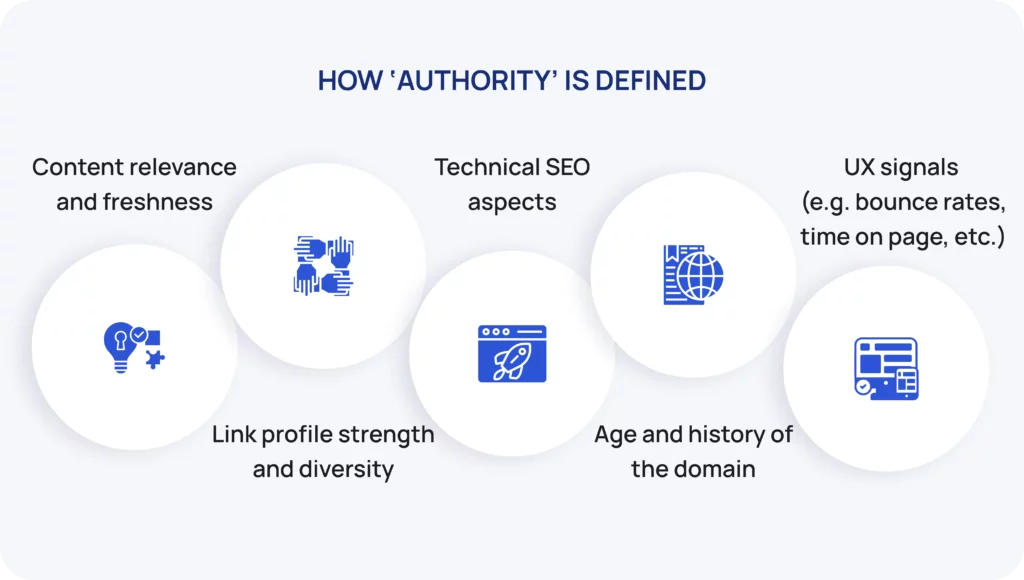
Here are some key elements:
- Content Relevance and Freshness
- Link Profile Strength and Diversity
- Technical SEO Aspects
- Domain Age and History
- User Experience (UX) Signals
Surely, there are many other factors, but the ones above are the most influential. Collectively, they help Google determine the trustworthiness and authority of your site.
Are Backlinks a Trust Signal to Google?
Definitely. Backlinks are one of Google’s key trust signals.
When top-tier sites link to your content, it shows you're credible, authoritative, and worth ranking.
Even Google confirms that links from prominent websites help signal trustworthy information.
🔴 Here’s what Google says about it:
"After identifying relevant content, our systems aim to prioritize those that seem most helpful. To do this, they identify signals that can help determine which content demonstrates expertise, authoritativeness, and trustworthiness. For example, one of several factors we use to help determine this is understanding if other prominent websites link or refer to the content. This has often proven to be a good sign that the information is well trusted."
So, backlinks act as third-party endorsements. If a reputable site links to your content, it tells Google your information is valuable and trustworthy.
Are High-Authority Backlinks a Trust Signal for AI Search?
73.2% of SEOs say backlinks still play a role in showing up in AI search results. Even as search evolves, strong links remain a key signal of trust.
There's no clear-cut answer yet, but AI search tends to favor trusted sources and sites with strong high-authority backlink profiles.
🤝 The Role of DA and DR
While DA and DR aren't used directly by Google, they provide valuable insights for SEO professionals.
Here’s how you can leverage these metrics to enhance your off-page seo strategy:
- Find good link targets: target sites with strong DA/DR to maximize authority gains.
- Check link quality: evaluate a site's score before pursuing a backlink.
- Analyze competitors: compare your DA/DR to theirs to find gaps.
- Track progress: use score changes to measure link-building impact.
- Prioritize spend: focus budget on links from high-authority domains.
- Vet partnerships: use DA/DR to assess potential SEO value in outreach.
Nathan Gotch, Founder of Gotch SEO Academy, sums it up well:
Google doesn’t use third-party metrics for rankings, but these metrics do have utility. For example, DR measures the strength of your link profile. It’s not 100% accurate, but it gives you a rough idea of your authority. This is critical for SEO performance because backlinks are a big piece of the ranking equation. I’d argue that overall site authority is the biggest factor outside of content and UX.
Thus, as you can see, using DA and DR wisely can help you make informed decisions and optimize your link-building strategy.
At What Point Does a Website Achieve High Authority?
Determining exactly when a website achieves "high authority" is tricky. Many factors contribute to it, far more than just having a high DA or DR score.
Generally, 70+ DA or DR sites can be considered 'trusted,' but even that isn't enough.

For instance, domain authority can be manipulated, so high DA or DR could be untruthful.
Nathan Gotch, Founder of Gotch SEO Academy, demonstrated this with an experiment of paying for backlinks to increase a site's DR from 0 to 70; it showed that high DR doesn't always mean genuine authority:
The key is to get backlinks from websites with high-quality link profiles. This requires manual analysis to qualify opportunities. Don’t qualify link opportunities based on DR or DA alone because these metrics can be easily manipulated.
A high DR score doesn't necessarily indicate genuine authority.
According to Steven J. Wilson, SEO Specialist and Consultant, to truly assess a site's authority, you should consider these next three factors:
A holistic DA strategy involves looking beyond links. You should look into organic traffic, site age, and link velocity.
- Traffic will help you understand how much Google trusts the site. If a site has hundreds of pieces of content but less than 1,000 organic visitors then it’s a sign of low quality.
- Site age is important and should match the DA. If a domain is new but already has a high DA is a sign that the DA is likely built artificially.
- Finally is link velocity. There should be a natural growth in links being built due to new content and the content having enough time to be indexed and ranked by Google. Huge spikes in links over a short period is a clear sign the DA was built artificially.
Emphasis on Relevance More Than Vanity Metrics
According to Jules Davies, E-Commerce SEO Expert and Founder at Scalerrs, while metrics like DA and DR are critical, they shouldn't take away from the topical relevance of the linking site.
Links from related sites may signal to search engines that your content is valuable within the niche.
Relevance matters more than pure authority does.
For example, a link from a topically relevant site with a lower DR can be way more vital than a highly authoritative general site link that doesn't share anything in common thematically.
Jules Davies emphasizes:
I’d take any day a backlink from a website with a lower DR but high relevancy to my target website.
In my experiment, I searched "why submit 1099" (referring to a form used to report money paid to a non-employee for their services), which produced results that indeed demonstrate Google is using more signals than just a site's DR number and count of backlinks to it.
Among high-DR results were law firms with less DR but with a lot fewer backlinks but relevant content.

This shows that Google values the relevance of content and expertise rather than just high authority scores.
The main takeaway here is to reach for backlinks coming from relevant and authoritative websites in the niche. This not only betters the site's credibility, but it also aligns better with how search engines are now going about ranking quality links.
🔍 How to Get High Authority Backlinks
So how do you get high DA backlinks, you ask? After all, it's one thing to identify them, but getting them is a whole different game.
Here are some proven strategies to secure those coveted high-authority backlinks.
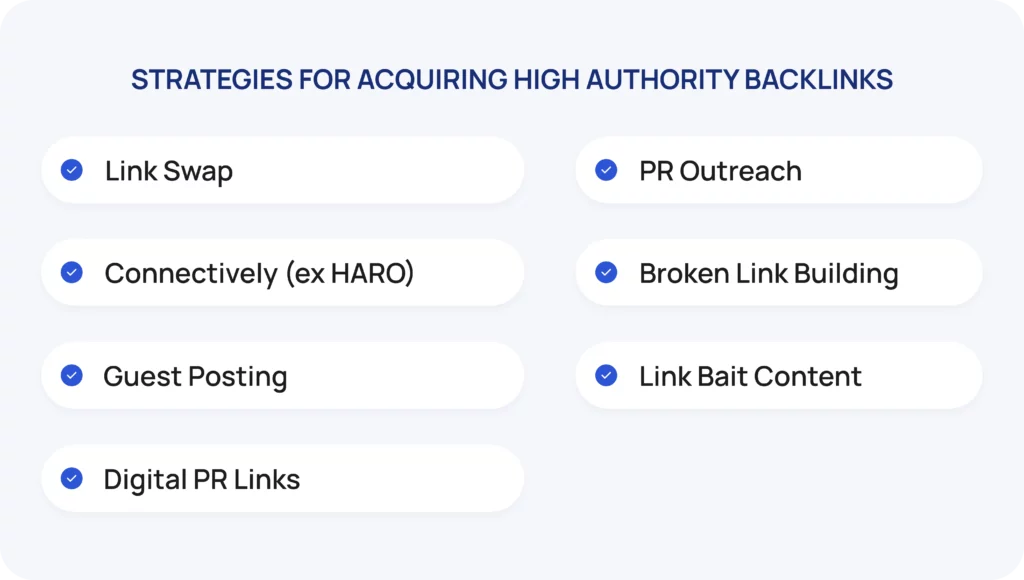
Link swap
Link swapping means trading backlinks with other sites.
You link to them and they link to you. It’s a common tactic, but if overused, Google may see it as manipulative and penalize your site.
To reduce risk, many SEOs use triangular exchanges where Site A links to B, B links to C, and C links back to A.
This keeps the exchange less direct and more natural.
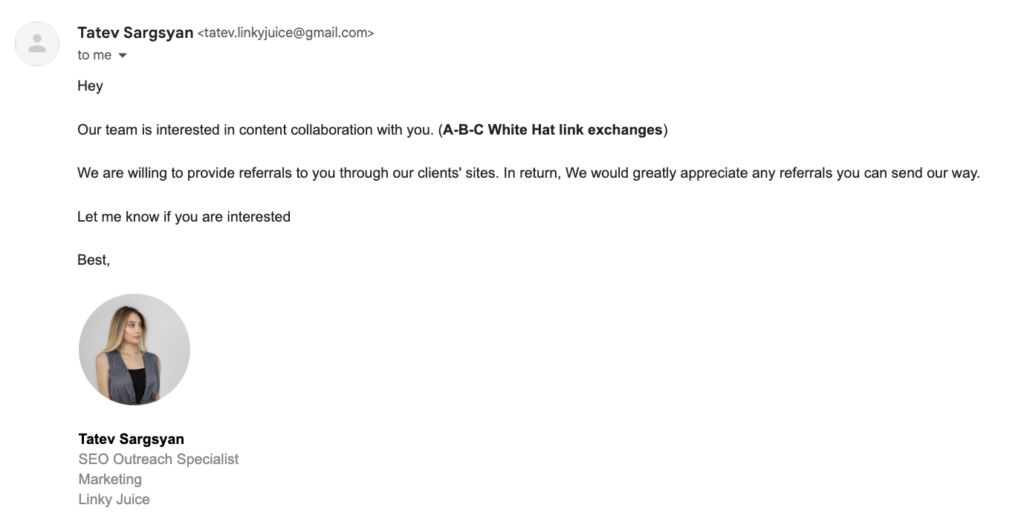
But remember, successful link swaps require decent domain authority. If your site has zero DR, high-DR sites like G2.com will likely ignore your requests.
✅ Editorial.Link will get you backlinks from reputable sites no matter your site's DR or DA. We work with world-famous companies like podium.com, monday.com, namecheap.com, envato.com, cloudways.com, wordstream.com, and hubspot.com to ensure our clients receive only high-authority, contextually relevant links.
HARO link building
HARO link building is all about pitching journalists with expert insights in exchange for backlinks or brand mentions.
In the age of AI search, getting cited by trusted outlets like Forbes or Business Insider shows real authority and can help your content surface more often.
Here’s a Zapier brand citation we earned through HARO link building:

Here’s what a typical HARO request looks like:

The downside?
- You never know which media outlet you’re submitting your quote to, as writers often prefer to remain anonymous. This anonymity makes it challenging to choose the right media opportunities.
- HARO’s conversion rate is unpredictable. You never know how many of your comments will get published, and it's likely you won’t hear back from the journalist once the article goes live.
Guest posting
Guest posting is one of the oldest and most reliable ways to earn high-authority backlinks.
Find sites in your niche. Look for “Write for us” pages.
No page? Reach out anyway. Many accept guest posts without saying so.
Pitch original content. Make sure it brings value.
Focus on quality. One strong link beats ten weak ones. Avoid posting on link farm sites because they do more harm than good.
You can even use ChatGPT to find guest post opportunities.
Check out our guide on using ChatGPT for link building, and our guest posting services if you want to scale without doing all the heavy lifting yourself.

PR outreach
PR backlinks come from mentions in media outlets.
This involves reaching out to editors and pitching your link-worthy content.
PR link building can include link insertions, press releases, and thought leadership articles.
Unlike guest posts or link swaps, PR backlinks often come with a story.
They add context around your brand, which helps both search engines and AI-driven platforms recognize and trust your expertise.
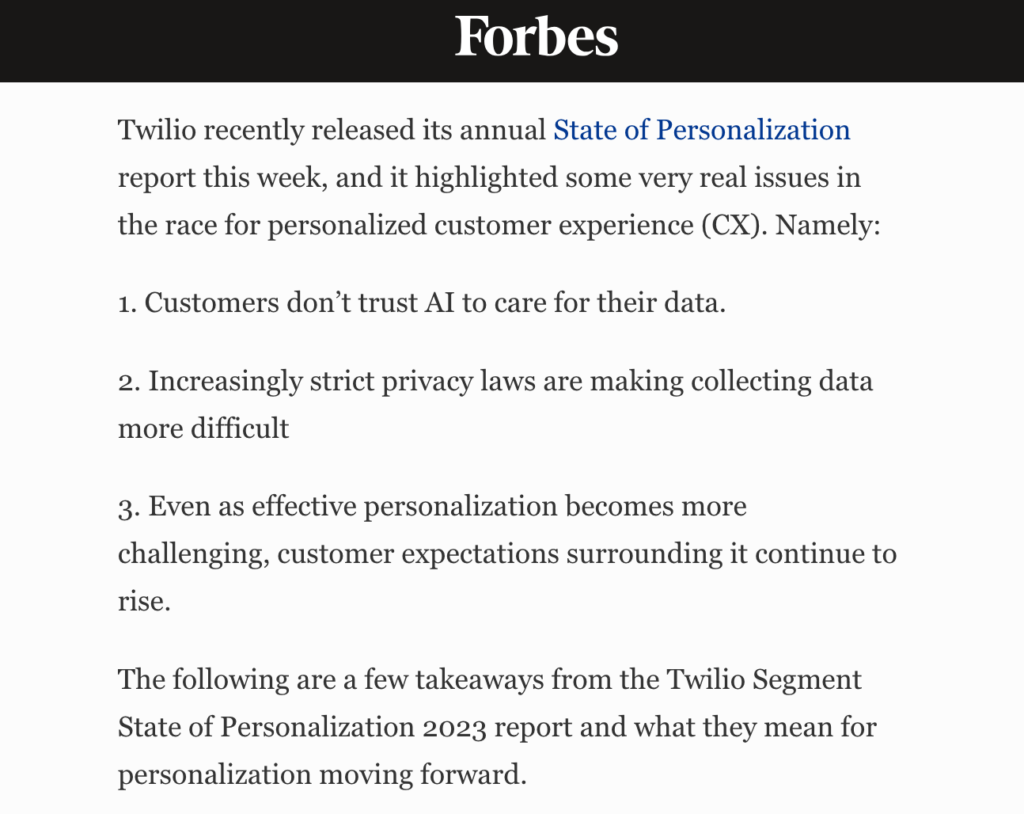
Broken Link Building
Want a smart way to score high-authority backlinks? Try broken link building. It's all about spotting dead links on top-notch websites and suggesting your content as a replacement.
Yes, it can take some time, but the payoff is huge. After all, you're helping site owners fix a problem, which boosts their user experience. In fact, recent data on Alnalytify shows broken link building often beats other strategies in success rate.
How do you get started?
Start by identifying your competitors' broken pages with tools like Ahrefs, then reach out to the sites linking to those dead pages and offer your content instead:
- Use a website crawler or link analysis tool to sort the site's pages by the number of inbound links.
- In Ahrefs, open Site Explorer, go to Pages -> Best by links, and filter for 'Dofollow' and '404 not found' under HTTP Code.

- Once you identify sites linking to these dead pages, you can make a list for outreach.
Link Bait Content
Creating link-worthy content, or "link bait," is a killer way to build backlinks. However, in 2025, you need to go beyond just good content.
Your stuff needs to be unique and highly relevant to stand out in the crowded content space.
Jakub Rudnik from ActiveCampaign notes that old tricks like stats roundups are played out. Instead, find a fresh angle and run with it.
And we can’t help but agree.
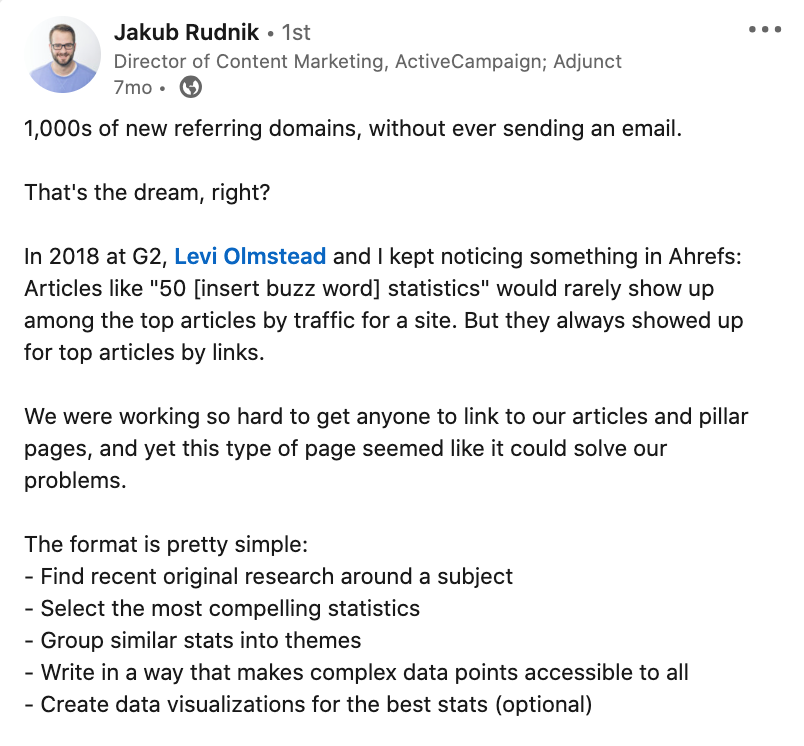
Sounds good, right? But here’s the second part:
"Sure, this strategy has been done to death over the past five years. At ActiveCampaign, we’re up against hundreds of 'email marketing statistics' articles. With a DR of 90, we might crack page 1, but for most companies, it’s just not worth the effort."
This means planning, researching, and crafting something almost no one else has. Plus, you’ll need strong PR outreach to spread the word and draw in those backlinks.
Digital PR Links
Digital PR is all about getting your brand noticed on the internet. When you’re featured in articles, news sites, and top-tier publications, it’s like giving your website a VIP pass to better SEO, a stellar reputation, and more visitors.
Picture this: you’ve launched a fashion brand, and your latest collection just went viral on social media. With Digital PR, fashion bloggers, influencers, and online magazines are buzzing about your trendsetting designs. You could even host a live-streamed fashion show!
Digital PR links come from trustworthy, high-authority sites, which means Google gives them a thumbs up, and that boosts your site’s credibility and SEO. Plus, they bring in visitors who are genuinely curious about what you offer.
Here’s an example:
Wrangler worked with AMP3 PR to launch an exclusive collection at Fred Segal Sunset, aiming to boost their modern business unit.

The campaign involved:
- Media and Influencer Outreach: targeted high-end media outlets and fashion editors, organizing a celebrity and influencer event.
- Event Strategy: the “Elevated Fair” theme event attracted 300+ industry attendees and significant media coverage.
Results:
- 261 influencer mentions with a 93 million social reach.
- Google search volume for “Wrangler” in LA tripled.
- 30+ media hits from Daily Mail, ELLE, Variety.
- 972 million PR impressions valued at $89 million.
How do you secure digital PR links?
- Find the Perfect Outlets: Hunt down the media outlets and journalists who are into your industry. Make a hit list with big names and niche players.
- Create Irresistible Stories: Journalists love a good story. Use unique data, surveys, or intriguing angles to make your pitch pop.
- Personalize Your Pitches: Skip the generic emails. Use the journalist’s name, mention their previous work, and show why your story is perfect for their audience.
- Follow Up, Don’t Give Up: No response? No problem. Send a friendly reminder. Persistence works, but don’t be a pest.
Red Flags On Authority Backlinks
Not all high-authority backlinks are beneficial. So beware of relying solely on DA or DR metrics without deeper investigation.
Nathan Gotch, Founder of Gotch SEO Academy, warns against trusting surface-level metrics:
Relying on surface-level metrics like DR or organic traffic without deeper investigation is a major red flag. Shady link vendors buy expired domains, create fake keywords, and artificially inflate organic search traffic. So, on the surface, a link opportunity might look “good,” but it’s just a glorified PBN.
Evelina Milenova, SEO Manager at Opinion Stage, adds that if a website shows a high DR but has minimal organic traffic or an abrupt traffic drop, it likely wasn't built with sustainable strategies.
Looking at DR/DA in isolation is highly misleading. If the website barely has any traffic or its traffic is not coming from the countries you're targeting – it's better to skip it. Another thing to look at is the traffic dynamic – you want to see stable growth rather than sharp fluctuations.
Here's an example of what to avoid – the website has DR 72, but its organic traffic is just 1.1K. It's clear that the DR has been manipulated (see the screenshot).

Another example is an abrupt traffic drop, which demonstrates the website wasn’t growing with sustainable strategies (see the screenshot).”
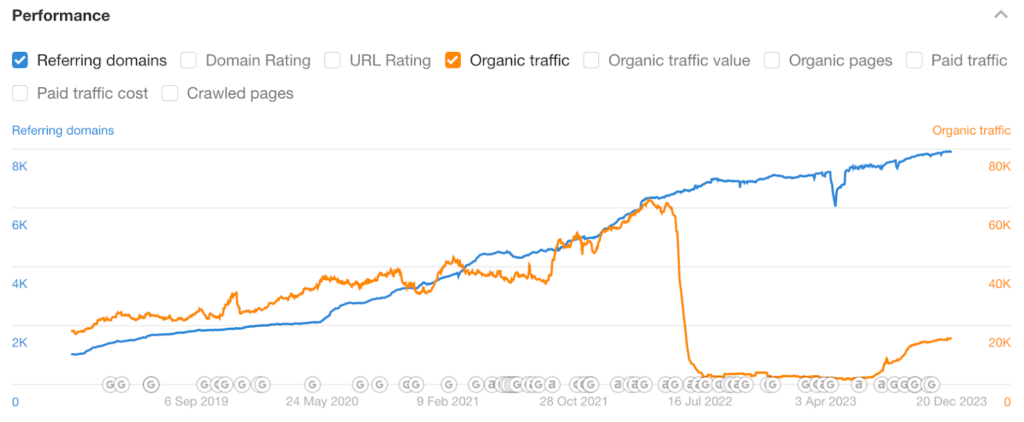
Evelina Milenova, SEO Manager at Opinion Stage
Remember, high-authority backlinks can supercharge your profile, but watch out for these red flags:
Don’t rely only on DR or traffic numbers. Some sites use fake signals or belong to PBNs.
Check if the traffic comes from your target countries. High DR means little if the audience isn’t relevant.
Watch for steady traffic growth. Big spikes can signal spammy tactics or penalties.
Don’t Confuse Authority for Third-Party Metrics
Google uses authority as a trust signal, but DA and DR are third-party metrics that can be manipulated.
Always prioritize link relevance.
A relevant backlink from a site with a lower DA score can be more valuable than an irrelevant link from a high-DA site.
Securing high-authority backlinks requires a combination of strategies and careful evaluation. Prioritize quality and relevance over vanity metrics to build a robust and effective link profile.





